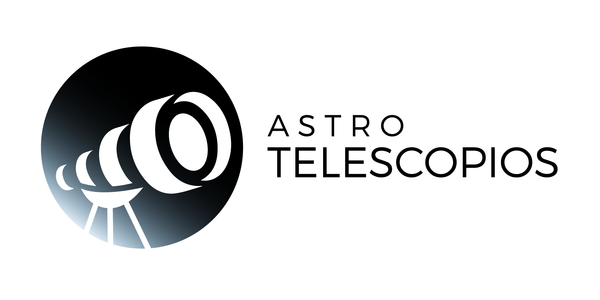
The magnification factor in a telescope
Normally when we hear the magnification factor of a telescope we think of the maximum magnification capacity that a telescope provides, but there are three main magnifications that any astronomy fan needs to know. In this article we explain it to you so that you can carry out the calculation without complications.
Is a higher magnification factor synonymous with better quality telescopes?
That's what many beginners believe, although it doesn't have to be that way; small or intermediate factors are often more effective. Here you will learn how to calculate the magnification factor.
Each telescope has a different focal point, depending on the curvature of its mirrors or lenses. Only with the focal length a small magnification factor is already achieved. But, in order to see the image we need to attach an eyepiece. We can understand eyepieces as a magnifying glass that is responsible for magnifying the image right at the focal point.
How is the magnification factor calculated?
The magnification factor of a telescope is calculated with this formula:
magnification factor (Fa) = focal length of the objective (Fob) / focal length of the eyepiece (Foc)
This is how the increases are calculated:
The achievable magnification factor depends on the relationship between the focal length of the objective and that of the eyepiece. To do this, you must divide the focal length of the telescope by that of the eyepiece:
A = fob/foc
If, for example, you use a 1000mm focal length telescope with a 5mm focal length eyepiece , you will get a magnification factor of 200 .
In theory, the magnification factor may be immeasurable. But it is limited by the aperture of the lens. The exit pupil plays a fundamental role. This is the diameter of the beam of rays that leaves the eyepiece and enters the eye. Now we will go deeper into the topic.
Minimum magnification factor
The minimum magnification factor is limited by the telescope aperture. In this regard, the exit pupil cannot be more than 7 mm, which is generally the maximum diameter that the pupil of the human eye can reach. But only on pitch black nights.
We will obtain the minimum reasonable magnification if we divide the objective aperture by the diameter of the maximum pupil aperture .
A beam of light rays 7 mm in diameter passes through the eyepiece and into the eye.
Amin = Opening in mm / 7
Let's take a practical example: if we use a telescope with a 200 mm aperture objective , the minimum reasonable magnification would be an approximate factor of 28 . If the telescope aperture were larger, then the minimum magnification would also be higher. And vice versa, in smaller telescopes, lower.
Normal magnification factor
Normal or optimal magnification is reached when the star stops looking point-like and we begin to perceive it as a tiny disk with diffraction rings. We then use the full resolution potential of the optics, which means we will see many individual details that are hidden at higher or lower magnification.
Optimal magnification is achieved with an eyepiece exit pupil of between 0.7 and 0.8 mm. There are no exact limits, but rather a reference.
Aopt = Opening in mm / 0.7
So the normal magnification factor for a 100 mm aperture telescope would be 142, and 285 for a 200 mm instrument.
Maximum magnification factor
Each telescope has its own magnification limit . It is twice the aperture of the lens. However, you won't (and shouldn't) reach for it every night. It must be taken into account that this "higher level" of magnification only allows you to enjoy the observation when the object is sufficiently luminous and the atmospheric turbulence is perfect . To determine for yourself whether or not it is reasonable to approach this limit, follow these instructions: place an eyepiece with an exit pupil of 0.5 mm and pay attention to atmospheric turbulence. How do you see the object? It's blurry? Is it too dark? Are viewing conditions optimal tonight?
This is how the maximum magnification factor is calculated:
Amax = Opening x 2
Suppose you have a telescope with a 70mm aperture, to find the maximum magnification you have to multiply the aperture by 2, then you will have 140x magnification.
If the telescope has a 70mm aperture and 700mm focal length, you know that the maximum magnification is 140x, but what eyepieces can you use? You just have to divide the focal length of the telescope by the focal length of the eyepiece, therefore, if you have purchased a telescope that comes with a 10mm eyepiece you will have 700/10 = 70x magnification. With these magnifications you can use a barlow lens with 2 magnification factors, achieving the maximum possible 140 magnifications.
